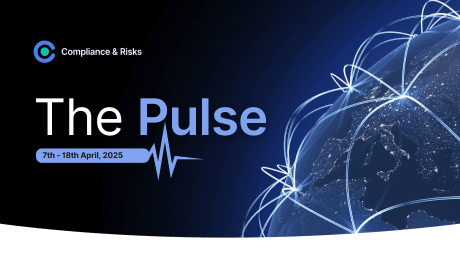
Sustainable Success: How Stakeholder Alignment Paves the Way for Labeling Compliance

In today’s fast-paced apparel industry, stakeholder alignment has become more critical than ever. With constant changes in regulations, consumer preferences, and supply chain complexities, it’s crucial for fashion companies to align all stakeholders towards a common goal.
As the industry continues to grapple with its damaging environmental and social impact, consumers, regulators, and other stakeholders may increasingly scrutinize how brands communicate about their sustainability credentials. If brands are to avoid losing consumer confidence, they must show that they are making meaningful and credible change while abiding by emerging regulatory requirements.
Our Mastering Labelling Compliance fireside chat series aims to shine a light on how apparel industry titans such as VF Corporation are approaching their labelling compliance successfully, winning consumer confidence and stakeholder buy-in, by using the Compliance & Risks and WFSGI’s Compliant Labelling Requirements Solution – a comprehensive compliance management tool that helps organizations stay up to date with the latest regulations and maintain their labelling manuals.
With regulations changing frequently, organizations must be able to monitor the latest developments and adapt their labelling practices accordingly, especially as regulators and stakeholders increase the requirements to back up any sustainability claims, along with brands seeking better traceability along the supply chain.
The Importance Of Stakeholder Alignment
Apparel companies must comply with regulations related to product safety, labeling, environmental impact, and social responsibility. Non-compliance can result in penalties, loss of business, and damage to reputation. Therefore, it’s essential to establish clear communication channels to have stakeholder alignment when it comes to compliance.
When all stakeholders, including internal teams, external suppliers, and regulatory agencies, are aligned, compliance can be achieved more efficiently and effectively.
Effective alignment ensures that everyone involved in the labelling process is aware of their responsibilities and the regulatory requirements that must be met.
By aligning stakeholders, fashion companies can ensure that everyone is on the same page and working towards the same goals. This can help prevent misunderstandings, delays, and mistakes, which can be costly in terms of time, money, and reputation. Moreover, stakeholder alignment can help companies build stronger relationships with their partners, foster collaboration, and drive innovation.
Supply Chain Management
Apparel companies operate on a global scale, which makes supply chain management challenging. Managing a complex network of suppliers, manufacturers, and logistics providers requires constant coordination and communication. When stakeholders are not aligned, it can lead to delays, errors, and disruptions in the supply chain.
By having all stakeholders aligned towards a common goal, supply chain management can be streamlined, and companies can respond more quickly to changing market demands.
Managing Compliance Using Compliant Labeling Requirements Solution
This is where Compliance & Risks Compliant Labeling Requirements Solution comes in – providing a centralized resource that all stakeholders can access.
The enterprise software provides comprehensive guidance on labelling requirements, ensuring that all stakeholders are aligned and that labelling compliance is achieved across the entire supply chain. Apparel companies can streamline their labelling compliance management and focus on producing high-quality products that meet regulatory requirements.
By providing comprehensive guidance on labelling requirements, the CLR Solution ensures that all stakeholders are on the same page, ensuring labelling compliance is achieved across the entire supply chain. Communication is key to ensure that you have successful plans across the business and that everybody’s on the same page.
The platform also helps organizations manage the complexity of labelling compliance by providing real-time updates on changes to regulations and standards. This allows companies to stay ahead of the curve and proactively manage labelling compliance, rather than reactively responding to changes.
Good Practices For Tackling Labeling Compliance Challenges
Industry leaders, such as VF Corporation, utilize several good practice techniques that can help organizations tackle compliance challenges more effectively. The first step is to identify who the stakeholders are and engage them. This includes both internal and external stakeholders such as suppliers and agencies, which can help provide information and guidance.
When it comes to tackling a compliance challenge, clear communication is key. The message must be clear, highlighting why compliance is important and the consequences of non-compliance. It’s important to anticipate the questions and concerns that may arise from stakeholders and be prepared to address them effectively.
Sustainability and Corporate Social Responsibility
Sustainability and corporate social responsibility have become increasingly important in the fashion industry. Consumers are demanding more transparency and accountability from companies regarding their environmental and social impact.
To meet these demands, fashion companies must align all stakeholders towards sustainability goals. When all stakeholders are aligned, it becomes easier to implement sustainable practices, reduce environmental impact, and improve social responsibility.
Streamlining Compliance
Industry titans, such as VF Corporation, use Compliance C2P solution to allow them to gain a comprehensive understanding of the impact to their products in a single place.
Our Product Compliance Spec allows you to get an immediate view of all the requirements and draft evidence needs your team have created. The Spec can be used to quickly and easily get a view of how the product development is impact to get market access to all the necessary markets.
The solution provides a comprehensive approach to labelling compliance, helping organizations streamline their compliance efforts. By centralizing resources and providing clear guidance, it helps to ensure that stakeholders are aligned and compliance is achieved across the entire supply chain. Our solution clients to get a comprehensive understanding of the impact to your products in a single place.
Through its cloud-based platform, our solution enables organizations to manage compliance in real-time, ensuring that they stay up-to-date with regulatory changes and can respond quickly to any compliance challenges that arise.
Conclusion
Stakeholder alignment has become more critical than ever in today’s highly-regulated world of apparel. With constant changes in regulations, supply chain complexities, and sustainability challenges, companies must ensure that all stakeholders are aligned towards a common goal. By doing so, fashion companies can stay ahead of the curve, achieve compliance, streamline supply chain management, and meet sustainability goals.
By using the Compliant Labeling Requirements Solution to manage labelling compliance, organizations can ensure that all stakeholders are aligned and working towards the same goals. This can help prevent misunderstandings, delays, and mistakes, and drive innovation and growth. In today’s complex and competitive fashion industry, stakeholder alignment is essential for companies that want to succeed and thrive.
Whether you’re looking to enhance compliance efforts or stay ahead of regulatory changes, we provide a powerful tool that can help streamline your efforts and ensure that you’re meeting the needs of all stakeholders.
See C2P In Action In 12 Minutes
Join us for a bite-sized high-level product compliance solution demo to witness the true power behind C2P.








